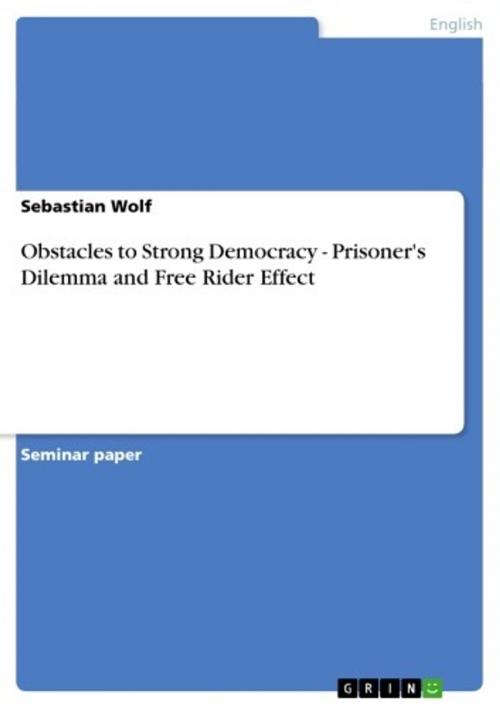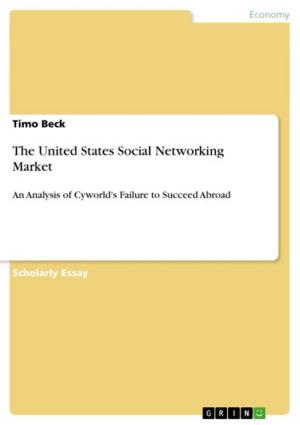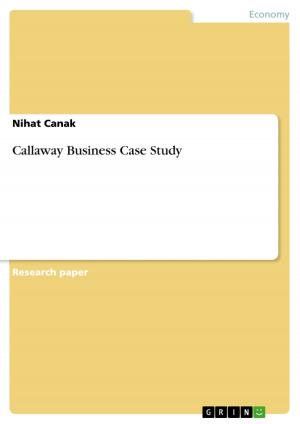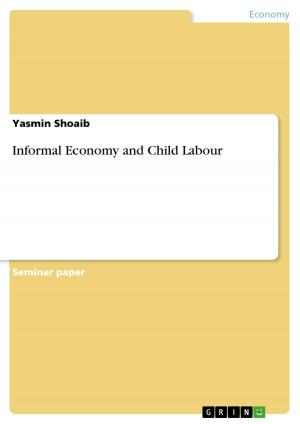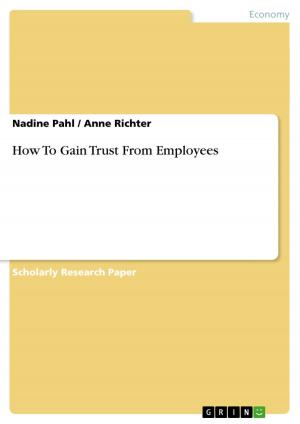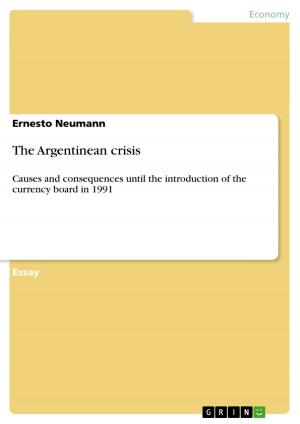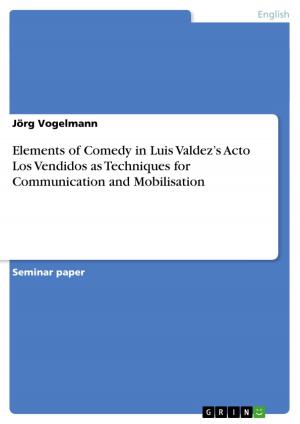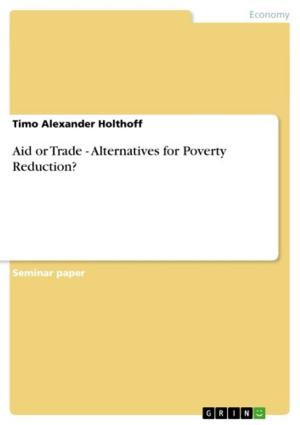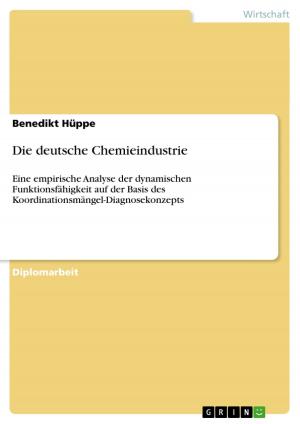Obstacles to Strong Democracy - Prisoner's Dilemma and Free Rider Effect
Prisoner's Dilemma and Free Rider Effect
Nonfiction, Entertainment, Drama, Anthologies| Author: | Sebastian Wolf | ISBN: | 9783638390101 |
| Publisher: | GRIN Publishing | Publication: | June 23, 2005 |
| Imprint: | GRIN Publishing | Language: | English |
| Author: | Sebastian Wolf |
| ISBN: | 9783638390101 |
| Publisher: | GRIN Publishing |
| Publication: | June 23, 2005 |
| Imprint: | GRIN Publishing |
| Language: | English |
Seminar paper from the year 2004 in the subject American Studies - Culture and Applied Geography, grade: 1,7, LMU Munich (Amerika Institut), course: Proseminar: Communitarianism, 6 entries in the bibliography, language: English, abstract: In order to establish a strong democracy, Barber thinks, an institutional framework has to be created. The institutions have the purpose to give people the opportunity to become engaged citizens, an opportunity that is not yet provided for, that is not provided for in a liberal democracy. Barber says, that 'strong democracy must offer a systematic program of institutional reforms rather than a piecemeal package of particularistic, unrelated modifications' (p. 263). Therefore the twelve points of his strong democratic program have to be seen as one unitary complex. 'The potency of the reforms offered here', Barber continues 'lies almost entirely in their capacity for mutual reenforcement when implemented in concert' (p. 264). Thus, one cannot discuss certain individual points of the agenda without taking the others into account, as well. That is why I will discuss three points that are closely related to each other and not that closely related to the others 9 points. Nevertheless it will be necessary to take a look at the left out points at the end of the discussion to see if they entail provisions that re-enforce or support the ones our focus is laid on. My strategy is the following: In the fist part of the essay I will describe the three points of the agenda I want to discuss. The institutions I want to discuss are the Neighborhood Assemblies, the Civic Communications Cooperative and t a Civic Videotext Service. In the second part I will discuss and criticize them, focusing on the question of the practical possibility of their realization. Therefore I will at first lay down a theoretical foundation that is alternative to Barbers. I will explain the prisoner's dilemma and the free rider effect. And I will show which obstacles they place on the strong democratic program and how the strong democratic program deals with these problems. I will then show that, given this new focus, the three points of the Strong Democratic agenda are not likely to succeed. They are not likely to succeed even if the other points of the program are taken into account.
Seminar paper from the year 2004 in the subject American Studies - Culture and Applied Geography, grade: 1,7, LMU Munich (Amerika Institut), course: Proseminar: Communitarianism, 6 entries in the bibliography, language: English, abstract: In order to establish a strong democracy, Barber thinks, an institutional framework has to be created. The institutions have the purpose to give people the opportunity to become engaged citizens, an opportunity that is not yet provided for, that is not provided for in a liberal democracy. Barber says, that 'strong democracy must offer a systematic program of institutional reforms rather than a piecemeal package of particularistic, unrelated modifications' (p. 263). Therefore the twelve points of his strong democratic program have to be seen as one unitary complex. 'The potency of the reforms offered here', Barber continues 'lies almost entirely in their capacity for mutual reenforcement when implemented in concert' (p. 264). Thus, one cannot discuss certain individual points of the agenda without taking the others into account, as well. That is why I will discuss three points that are closely related to each other and not that closely related to the others 9 points. Nevertheless it will be necessary to take a look at the left out points at the end of the discussion to see if they entail provisions that re-enforce or support the ones our focus is laid on. My strategy is the following: In the fist part of the essay I will describe the three points of the agenda I want to discuss. The institutions I want to discuss are the Neighborhood Assemblies, the Civic Communications Cooperative and t a Civic Videotext Service. In the second part I will discuss and criticize them, focusing on the question of the practical possibility of their realization. Therefore I will at first lay down a theoretical foundation that is alternative to Barbers. I will explain the prisoner's dilemma and the free rider effect. And I will show which obstacles they place on the strong democratic program and how the strong democratic program deals with these problems. I will then show that, given this new focus, the three points of the Strong Democratic agenda are not likely to succeed. They are not likely to succeed even if the other points of the program are taken into account.
